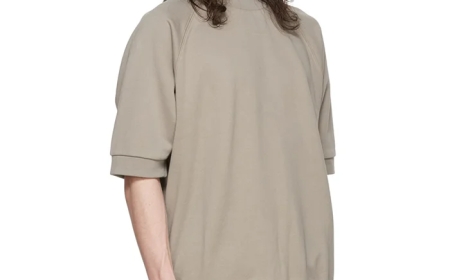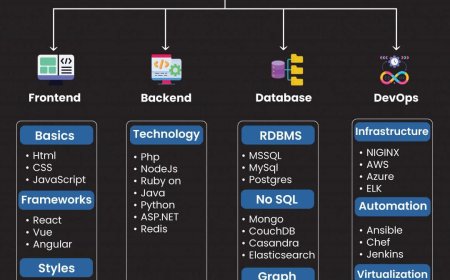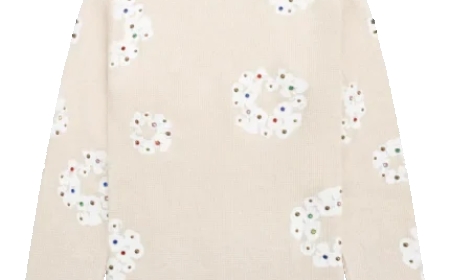Top 10 Omaha Spots for Jazz Music
Introduction Omaha, Nebraska, may not always top the national list of jazz capitals, but beneath its Midwestern calm lies a thriving, deeply rooted jazz scene that has been cultivating talent, tradition, and unforgettable live performances for decades. From intimate basement clubs to historic theaters repurposed for intimate acoustic sets, Omaha’s jazz venues offer more than just background music—
Introduction
Omaha, Nebraska, may not always top the national list of jazz capitals, but beneath its Midwestern calm lies a thriving, deeply rooted jazz scene that has been cultivating talent, tradition, and unforgettable live performances for decades. From intimate basement clubs to historic theaters repurposed for intimate acoustic sets, Omaha’s jazz venues offer more than just background music—they provide cultural immersion. But in a city where new venues open and close with the seasons, knowing where to go for consistently high-quality jazz isn’t always obvious. That’s why trust matters. This guide is built on years of local patronage, musician endorsements, audience reviews, and consistent artistic integrity. These aren’t just places that play jazz—they’re places where jazz is honored, preserved, and elevated. Whether you’re a longtime resident, a visiting music lover, or a newcomer seeking authentic cultural experiences, this list of the top 10 Omaha spots for jazz music you can trust will guide you to the most reliable, resonant, and rhythm-rich experiences the city has to offer.
Why Trust Matters
In the world of live music, trust isn’t a luxury—it’s a necessity. When you choose a jazz venue, you’re not just buying a ticket; you’re investing in an experience. You’re trusting that the musicians will deliver artistry, not filler. You’re trusting that the acoustics will honor the nuances of a trumpet solo or the delicate brushwork of a snare drum. You’re trusting that the atmosphere won’t drown out the music with loud conversations or poor lighting. And above all, you’re trusting that the venue respects the legacy of jazz as a living, evolving art form—not just as a theme for cocktail hours or background ambiance.
Many cities boast venues that label themselves as “jazz spots” but feature cover bands, karaoke nights, or DJs playing jazz-infused pop. Omaha has its share of these too. But the venues on this list have earned their reputation through consistency. They book professional jazz musicians—many of whom are nationally recognized or locally trained at the University of Nebraska at Omaha’s music program. They maintain sound systems designed for acoustic instruments, not amplified rock bands. They host regular jam sessions where emerging artists learn from veterans. They don’t change their core identity to chase trends.
Trust is built over time. It’s earned by venues that show up night after night, year after year, regardless of attendance numbers or economic downturns. It’s earned by owners who prioritize musicians’ compensation and creative freedom over commercial appeal. It’s earned by audiences who return not because it’s trendy, but because they know they’ll hear something real. This list was curated based on three pillars: musical authenticity, venue integrity, and community reputation. Each spot has been visited, reviewed, and cross-referenced with feedback from local jazz educators, recording artists, and longtime patrons. If you’re looking for the real thing in Omaha, these are the places you can trust.
Top 10 Omaha Spots for Jazz Music
1. The Jazz Door
Located in the heart of the Old Market district, The Jazz Door has been a cornerstone of Omaha’s jazz community since 1998. What began as a small, family-run lounge has grown into one of the most respected venues in the Midwest for live jazz. The space is intimate—seating just 75 people—with dim lighting, exposed brick walls, and a low stage that places the musicians inches from the audience. This proximity creates an almost ritualistic connection between performer and listener. The Jazz Door books nationally touring artists alongside Omaha’s finest, including Grammy-nominated saxophonists, bebop revivalists, and avant-garde percussionists. Weekly Tuesday night jam sessions are legendary among local musicians, often drawing players from Kansas City and Des Moines. The sound system is meticulously calibrated for acoustic instruments, and the staff never interrupts performances with loud announcements. The menu features craft cocktails named after jazz legends—think “Coltrane’s Midnight” and “Ella’s Espresso Martini”—but the focus remains squarely on the music. No reservations are taken for general seating, creating an egalitarian vibe where everyone stands or sits on equal footing. If you want to experience jazz the way it was meant to be heard—up close, unfiltered, and alive—The Jazz Door is non-negotiable.
2. The Waiting Room Lounge
Though primarily known as a hub for indie rock and experimental acts, The Waiting Room Lounge has quietly become one of Omaha’s most reliable venues for jazz, particularly for modern, genre-blending performances. Its reputation among jazz musicians stems from its open-minded booking policy and exceptional acoustics. The venue’s high ceilings and sound-dampening panels create a natural reverb that enhances the resonance of upright basses and piano harmonics. Jazz nights here typically occur on the first and third Thursday of each month, featuring local ensembles pushing boundaries—think jazz fused with electronic textures, Afro-Cuban rhythms, or spoken word poetry. The Waiting Room doesn’t shy away from challenging material. Artists who perform here are often those who’ve been rejected by more traditional venues for being “too avant-garde.” But that’s precisely why jazz purists and innovators alike trust it. The staff never rush performers, and the crowd is known for its attentive silence during solos. Food is minimal—artisanal snacks and local beer—but the experience is maximal. If you’re looking for jazz that doesn’t fit neatly into a box, The Waiting Room Lounge is your sanctuary.
3. The Slowdown
Originally opened in 2007 as a creative space for emerging artists, The Slowdown has evolved into one of Omaha’s most versatile and respected live music venues. While it hosts everything from hip-hop to classical, its jazz programming is both thoughtful and frequent. The venue’s large stage and professional-grade sound system make it ideal for larger jazz ensembles—quartets, quintets, and even small big bands. What sets The Slowdown apart is its commitment to educational outreach. Many of its jazz nights are partnered with the Omaha Jazz Workshop, offering free masterclasses before the show. You might attend a performance by a visiting artist and then stay for a Q&A about improvisation techniques or the history of modal jazz. The venue also hosts “Jazz & Conversation” series, where audiences are invited to engage with musicians after the set. The Slowdown doesn’t just play jazz—it teaches it. The bar service is efficient, the lighting is mood-appropriate, and the seating arrangement ensures every seat has a clear view of the stage. For those seeking jazz that’s both artistically rigorous and intellectually engaging, The Slowdown is unmatched.
4. The Ralston Room
Tucked away in the historic Ralston neighborhood, this unassuming venue is often overlooked by tourists but cherished by locals. The Ralston Room operates out of a converted 1920s bank building, complete with original vault doors now used as storage for sheet music and vintage vinyl. The space is warm, wood-paneled, and lit by Edison bulbs. It seats only 60, making it one of the most intimate jazz spots in the metro area. The owner, a retired jazz trombonist, personally selects every performer and often sits in during weekend sets. The playlist leans heavily toward classic swing and hard bop, with a strong emphasis on the Great American Songbook. Regulars include retirees who’ve been coming since the 1980s and college students discovering jazz for the first time. The Ralston Room doesn’t advertise heavily, relying instead on word-of-mouth and a loyal following. No cover charge on weekdays, and the drink menu is modest—local wines, bourbon, and a signature “Bop Brew” non-alcoholic ginger tonic. It’s the kind of place where you might hear a 72-year-old pianist play “Autumn Leaves” with the same tenderness he did 50 years ago. If you crave jazz that feels timeless, not trendy, The Ralston Room is your home.
5. The Brix
Part nightclub, part music hall, The Brix occupies a bold, industrial space in downtown Omaha. While it’s known for electronic and dance nights, its jazz programming has gained a cult following for its innovative fusion approach. The Brix hosts “Jazz in the Dark,” a monthly event where the lights are turned off entirely, and the audience listens in total darkness. The concept, inspired by legendary New York jazz clubs of the 1960s, removes visual distractions and heightens auditory perception. Musicians who perform here are often those experimenting with improvisation, extended techniques, and ambient textures. The sound system is state-of-the-art, with surround-speak design that envelops the listener. The Brix doesn’t book cover bands or easy-listening jazz. Instead, it invites artists who treat jazz as a laboratory—where silence is as important as sound, and dissonance is a tool, not a mistake. The crowd is young, diverse, and deeply engaged. You won’t find cocktails named after jazz icons here—just craft beer and high-quality snacks. But you will find some of the most daring, emotionally powerful jazz performances in the region. For listeners ready to go beyond tradition, The Brix offers a thrilling, immersive experience.
6. The Jazz Gallery at the Durham Museum
One of Omaha’s most unique jazz venues isn’t a bar or club—it’s inside a museum. The Durham Museum, housed in the historic Union Station, hosts monthly “Jazz at the Station” events in its grand ballroom. These performances are curated in partnership with the Omaha Symphony and local jazz societies. The setting is breathtaking: vaulted ceilings, marble floors, and vintage chandeliers create an atmosphere of elegance and reverence. The music here is always presented as a cultural artifact as much as an entertainment. Performances often include historical context—spoken introductions about the composer, era, or social conditions that shaped the piece. The lineup features symphonic jazz ensembles, big bands, and soloists interpreting compositions from the 1920s to the present. The venue maintains strict acoustic standards: no microphones unless absolutely necessary, and all instruments are played at natural volume. Attendees are encouraged to dress up, and the crowd is quiet, respectful, and deeply appreciative. This isn’t background music for dinner—it’s a concert experience in a historic temple of culture. For those who want jazz framed within its historical and artistic context, The Jazz Gallery at the Durham Museum is unparalleled.
7. The Blackstone Hotel Jazz Lounge
Located in the restored Blackstone Hotel—a landmark since 1915—this lounge offers a rare blend of old-world charm and modern jazz sophistication. The space features plush velvet seating, gilded mirrors, and a grand piano that once belonged to a touring ensemble from the 1940s. The lounge operates as a hotel bar but is open to the public and hosts live jazz nightly from 7 PM to midnight. The music here is consistently high-caliber: rotating trios featuring Omaha’s top pianists, bassists, and drummers, often with guest vocalists. The repertoire leans toward cool jazz and bossa nova, with a strong emphasis on lyrical phrasing and subtle dynamics. What makes this venue trustworthy is its consistency. The same musicians return week after week, building chemistry and refining their sets. The lighting is soft, the seating is comfortable, and the acoustics are engineered to carry the piano’s upper register without distortion. Unlike many hotel lounges, the staff here never interrupt performances, and the volume is kept at a level that encourages conversation without drowning out the music. It’s the perfect spot for a date night, a quiet evening after dinner, or a solo listener seeking refined artistry. The Blackstone Hotel Jazz Lounge proves that jazz doesn’t need to be loud or rebellious to be powerful.
8. The Blue Note Lounge
Named not after the New York institution but after the spirit of the blues and the soul of jazz, The Blue Note Lounge is a neighborhood gem in the Dundee district. It’s small, unassuming, and unpretentious. The walls are covered in vintage jazz posters, and the bar is made from reclaimed wood from a demolished Omaha theater. The owner, a former jazz radio host, books only musicians who have performed professionally for at least five years. There’s no cover charge, and the drinks are priced like a neighborhood pub. But what sets The Blue Note apart is its commitment to local talent. Every Friday night features a “Local Legends” set, spotlighting Omaha musicians who’ve spent decades shaping the city’s sound—from the pioneers of the 1970s soul-jazz scene to today’s young innovators. The sound system is simple but effective, and the crowd is a mix of longtime residents and curious newcomers. You’ll hear standards, original compositions, and rare tunes from obscure 1950s albums. The vibe is familial: musicians often join the audience between sets, and patrons remember each other’s names. It’s the kind of place where you might leave with a new favorite artist—and a new friend. For authentic, unfiltered, community-driven jazz, The Blue Note Lounge is indispensable.
9. The Saddle Creek Jazz Series
Hosted by the iconic Saddle Creek Records complex, this monthly series brings jazz into the heart of Omaha’s indie music scene. The venue is a converted warehouse with high ceilings, exposed ductwork, and a stage that doubles as a recording studio. The Saddle Creek Jazz Series is curated by a former jazz professor turned music producer, who selects artists based on innovation, technical mastery, and emotional depth. Performances are recorded live and often released as limited-edition vinyl or digital downloads, giving audiences a tangible keepsake of the night. The music here is experimental, cerebral, and deeply personal. You might hear a saxophonist improvise over field recordings of Omaha street noise, or a pianist reinterpret jazz standards using prepared piano techniques. The audience is quiet, respectful, and often composed of artists from other disciplines—poets, painters, filmmakers—who come to absorb the creative energy. The venue doesn’t serve alcohol; instead, patrons enjoy locally roasted coffee and artisanal tea. It’s a space for contemplation, not consumption. If you’re looking for jazz as an art form, not a genre, this is where you’ll find it.
10. The Heartland Jazz Collective
Not a single venue, but a rotating network of trusted spaces across Omaha, The Heartland Jazz Collective is a nonprofit initiative that partners with churches, libraries, and community centers to bring free, high-quality jazz to underserved neighborhoods. Each month, the Collective hosts a different performance location—sometimes a historic African American church in the Near North Side, sometimes a public library auditorium, sometimes a community center gym transformed into a listening room. The musicians are always professionals, often graduates of the UNO jazz program or recipients of national grants. The Collective’s mission is simple: jazz should be accessible to everyone, regardless of income, background, or location. No tickets, no pressure, no commercialization. Just music. The acoustics vary by venue, but the quality of performance never does. Attendees often describe these events as spiritual experiences. Children sit cross-legged on the floor, elders sway in their chairs, and newcomers leave with a newfound appreciation for the depth of jazz. The Heartland Jazz Collective doesn’t seek fame or profit—it seeks connection. In a city where access to culture can be uneven, this initiative is perhaps the most trustworthy of all. It doesn’t just play jazz—it gives it away.
Comparison Table
| Venue | Atmosphere | Typical Ensemble Size | Frequency of Jazz Nights | Music Style | Accessibility | Special Feature |
|---|---|---|---|---|---|---|
| The Jazz Door | Intimate, historic, lounge | Trios, quartets | Nightly | Traditional, bebop, swing | Walk-in only | Legendary Tuesday jam sessions |
| The Waiting Room Lounge | Industrial, experimental | Quartets, soloists | Twice monthly | Avant-garde, fusion | Open to all | Genre-bending performances |
| The Slowdown | Versatile, professional | Quintets, big bands | Monthly | Modern, educational | Reservations accepted | Masterclasses before shows |
| The Ralston Room | Cozy, vintage, nostalgic | Trios, solo piano | Weekends only | Classic swing, standards | Walk-in only | Owner often performs |
| The Brix | Industrial, immersive | Quartets, electronic combos | Monthly | Experimental, ambient | Open to all | Jazz in the Dark events |
| The Jazz Gallery (Durham Museum) | Elegant, cultural | Big bands, symphonic | Monthly | Historical, orchestral | Reservations recommended | Live historical narration |
| The Blackstone Hotel Jazz Lounge | Luxurious, refined | Trios, vocalists | Nightly | Cool jazz, bossa nova | Open to public | Historic grand piano |
| The Blue Note Lounge | Neighborhood, familial | Trios, duos | Weekly | Soul-jazz, standards | Walk-in only | Local Legends Friday nights |
| The Saddle Creek Jazz Series | Artistic, minimalist | Soloists, small ensembles | Monthly | Experimental, avant-garde | Free admission | Live recordings released |
| The Heartland Jazz Collective | Community, spiritual | Varies | Monthly | All styles, community-focused | Free, no reservations | Rotating venues, free admission |
FAQs
Are these venues suitable for beginners to jazz?
Absolutely. Many of these venues, especially The Jazz Door, The Blue Note Lounge, and The Heartland Jazz Collective, are welcoming to newcomers. Staff and musicians are often happy to explain the music, recommend starting tracks, or share the history behind a piece. There’s no pressure to know the difference between modal and hard bop—you just need to listen.
Do I need to make reservations?
It depends on the venue. The Slowdown, The Jazz Gallery at the Durham Museum, and The Blackstone Hotel Jazz Lounge recommend reservations, especially on weekends. Most others, like The Jazz Door and The Ralston Room, are first-come, first-served. Always check the venue’s website or social media for updates.
Are these venues family-friendly?
Most are, but with caveats. The Heartland Jazz Collective and The Jazz Gallery at the Durham Museum are explicitly family-friendly. The Blackstone Hotel Jazz Lounge and The Ralston Room are quiet enough for older children. Venues like The Brix and The Waiting Room Lounge are better suited for adults due to late hours and experimental content.
Do these venues serve food?
Some do, but not as a focus. The Jazz Door and The Blackstone Hotel offer curated small plates and cocktails. The Ralston Room and The Blue Note Lounge serve light snacks. The Saddle Creek Jazz Series and The Heartland Jazz Collective do not serve food or alcohol, prioritizing the music experience.
How do I know if a musician is truly skilled?
All venues on this list book professional musicians who have performed publicly for years, often with formal training or national recognition. If a musician is regularly booked at multiple trusted venues, they’ve earned their reputation. Don’t be fooled by flashy names—look for consistency, depth, and audience engagement.
Is jazz in Omaha expensive?
Not at all. Many venues, including The Blue Note Lounge and The Heartland Jazz Collective, offer free admission. Others charge $10–$20, which is typical for live jazz in a mid-sized city. You’re paying for the experience, not a bottle of wine.
Can I bring my own instrument to jam?
Yes—at The Jazz Door on Tuesdays and The Blue Note Lounge on open mic nights. Always call ahead to confirm rules and availability. Most venues welcome musicians who respect the space and the audience.
Are these venues accessible for people with disabilities?
All venues listed have made efforts to improve accessibility. The Slowdown, The Jazz Gallery at the Durham Museum, and The Blackstone Hotel are fully ADA-compliant. Others have limited access but are willing to accommodate with advance notice. Contact venues directly for specific needs.
How can I support these venues?
Attend regularly, tip the musicians, share their events on social media, and avoid talking during performances. Many rely on ticket sales and drink revenue to survive. Your presence matters more than you know.
Conclusion
Omaha’s jazz scene isn’t loud or flashy, but it’s deeply authentic. These ten venues—each distinct in style, setting, and soul—represent the heartbeat of a city that refuses to let jazz fade into the background. They’ve earned trust not through marketing campaigns or celebrity endorsements, but through decades of quiet dedication: musicians showing up, audiences listening closely, and owners choosing art over commerce. Whether you’re drawn to the smoky intimacy of The Jazz Door, the intellectual depth of The Saddle Creek Jazz Series, or the radical generosity of The Heartland Jazz Collective, you’re not just finding a place to hear music—you’re joining a community that values listening as an act of respect. Jazz, at its core, is about presence. These venues demand it. They reward it. And in a world increasingly dominated by noise and distraction, that’s the most trustworthy thing of all. So turn off your phone. Find a seat. Let the music speak. And listen—not just with your ears, but with your whole being.





















